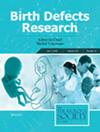Environmental justice (EJ) is essential for addressing the disproportionate burden of environmental hazards on vulnerable populations, particularly pregnant individuals and young children. Developmental sensitivity to toxic exposures, such as air pollution, lead, and endocrine-disrupting chemicals, is compounded by systemic inequities like food insecurity and housing instability. Structural racism and socioeconomic disadvantage further exacerbate these risks, leading to higher rates of preterm birth, low birth weight, and maternal morbidity in marginalized communities.
This study explores the intersection of environmental and social determinants of health, emphasizing EJ’s role in reducing disparities through community engagement, research, and policy reforms.
A narrative review of policies, interventions, and case studies was conducted to assess effective EJ strategies in mitigating maternal and child health disparities.
Successful community-driven initiatives, such as lead abatement programs and air quality improvements, demonstrate that aligning policies with community-identified priorities leads to measurable health benefits.
EJ-based interventions reduce environmental risks and health inequities through participatory research and systemic policy changes. However, challenges such as limited funding and data gaps require coordinated action.
To promote maternal and child health equity, we recommend expanding funding, institutionalizing community engagement, and leveraging innovative data collection. By prioritizing community-led solutions, EJ can drive systemic transformation, ensuring better health outcomes for future generations.


